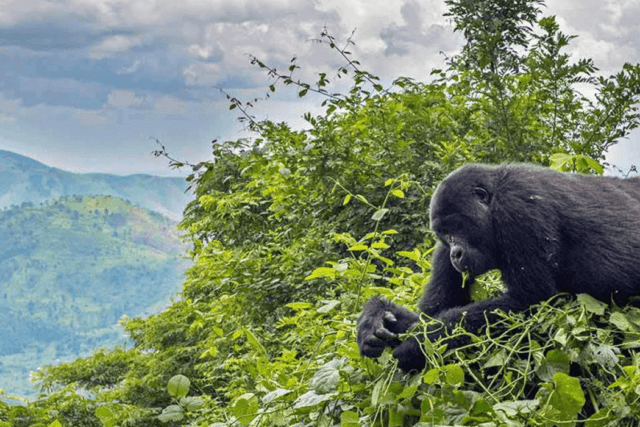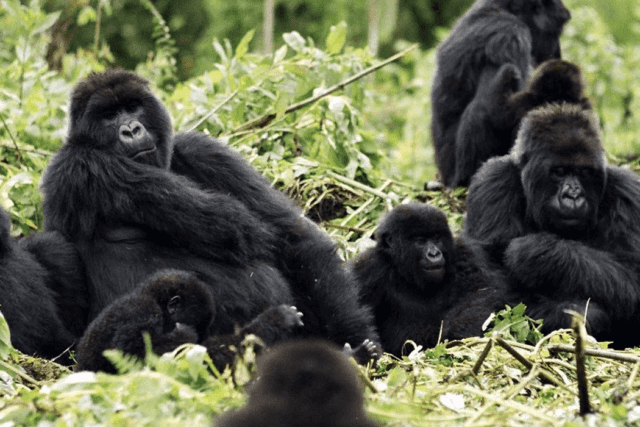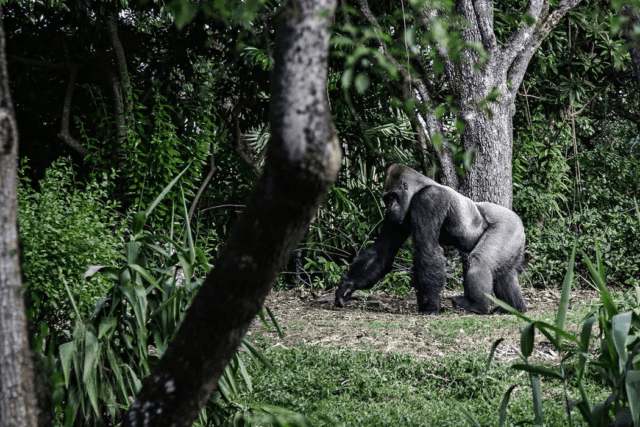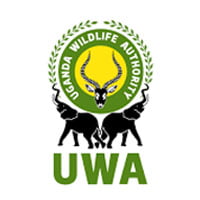Do you know, why are mountain gorillas endangered? They are one of the animals that face a consistent threat of extinction, and here is all you should know.
Even though mountain gorillas have seen a rise in population over the last 20 years, the International Union for Conservation of Nature (IUCN) still considers it an endangered species. This is because the threat to the future of gorillas is a volatile one that could escalate very fast in a short period. Here are the main threats to the livelihood of these gentle giants.

With this article, we are going to look at the various factors why mountain gorillas are endangered. These are threats to their lives and survival. We shall also look at what is being done, and how you can also play a part in saving these gorillas.
Why Are Mountain Gorillas Endangered?
1. Habitat Destruction.
The biggest threat and reason for mountain gorillas being endangered is destruction of their habitat. This is even more serious because mountain gorillas cannot survive in the captive environments of zoos. This was tried in the 1970s and it failed at every turn. What this means is that, without their habitat, gorillas will become extinct.
In addition, the only Mountain gorilla habitat is located in one of the most densely populated agricultural places in Africa such as Bwindi and Mgahinga. For example, in Virunga National Park, more than 2000 acres were cleared in 2004 and this displaced the gorillas that were living there.

2. War and Instability.
War and instability make conservation very difficult. This facilitates the destruction of their habitat and as seen above – threatens their existence.
This is why mountain gorilla populations in D.R. Congo are not increasing at the same rate as their counterparts in Rwanda and Uganda where stability has been realized for more years.
3. Poaching.
Another reason why mountain gorillas are endangered is poaching. In the areas where they live, there are other small mammals that are hunted for meat. And the traps set for these animals end up killing gorillas.
As far as mountain gorillas being hunted for meat, this is very rare if not impossible. This is because the cultures in Uganda and Rwanda that stay near gorilla habitats do not eat any primates.
In D.R.Congo where some tribes can eat primates, they still don’t eat gorillas and chimpanzees because they are respected as a form of the spirit of their dead elders.

4. Diseases.
Being nearly human, mountain gorillas also suffer the same plight regarding disease and illness. Gorillas can easily catch human diseases and will die in some cases.
Diseases like Ebola and COVID can kill gorillas, and given their social nature – keep spreading among various families.
5. Human-wildlife Conflicts.
This is a result of the shrinking natural habitat. As humans encroach on the forests, the gorillas end up living close enough to destroy the crops planted near the park. Human-wildlife conflicts are a big challenge to conservation because they can turn locals away from the conservation effort.
Conservation of Mountain Gorillas
Now let’s look at what is being done to make sure that these endangered gorillas can still exist on earth?
1. Extensive Research and Monitoring.
Scientific research doesn’t just help us know more about gorillas but also enables us to help them and conserve them better. The research kicked off in the 1970s and 80s by the likes of Dian Fossey and Tom Butynski has enabled us to learn more and the growing number of gorillas testifies to the results.
The problem with long-term research is when the funding is reduced and some activities have to close or downscale. Donating to such research efforts is how the everyday person can play a small role in ensuring that mountain gorillas don’t become extinct.
Take a look at the extensive work done by the Institute of Tropical Forest Conservation (ITFC) which is located in Bwindi’s Ruhija on their website.
2. Community Tourism Programs.
To curb both human-wildlife conflicts and poaching, communities have been engaged in the active conservation and protection of gorillas. These programs use a percentage of the money from gorilla trekking tourism to develop the local communities directly.
This has encouraged people to play a crucial role in conservation. Such programs are very successful in Uganda. Rwanda is doing fairly well and Congo is still starting out – due to distractions from civil unrest.
3. Human-wildlife Buffers.
To further curb the conflicts arising when gorillas come to the human side and destroy their crops, vegetation buffers are created to discourage gorillas from venturing out of the protected national parks. This is heavily done in Uganda’s National parks of Bwindi and Mgahinga.
The buffer zone is usually trees or shrubs that are not interesting for the mountain gorillas. Such trees are not edible and the gorillas have no interest in these buffer zones. Since gorillas do not eat tea, and it grows very well in the mountainous volcanic soils, some buffers are made with tea plantations. This creates income for the plantation owners and plays a conservation role.
4. Gorilla Tourism.
Beyond directly developing the communities that neighbor gorilla habitats, another portion of funds from gorilla trekking go toward developing the countries. Such funds contribute to political stability, education, health, and infrastructure among others.

This is where we contribute as well. By handling tours and trips for gorilla trekking, we know that the proceeds go into the local communities but also the entire country. With our gorilla trekking safaris in both Rwanda and Uganda, we are able to contribute to the well-being of gorillas in both countries and of course the governments.
If you are really interested in seeing gorillas in their natural habitat, we would like it if we assist you in organizing an adventure as such. Feel free to visit our gorilla trekking safaris page and look at some itineraries for inspiration.
Here are some gorilla trekking safaris that we think would be interesting for you to check out. Have a look, and remember, all our safaris are customizable.
- 5 days Uganda gorilla trekking expedition
- 4 Days Uganda Gorilla Trekking Expedition
- 3 Days Rwanda To Uganda Gorilla Trekking Excursion
What you can do to Save Gorillas
It is very good that efforts to save gorillas have had a positive result and their numbers are rising. And be that as it may, the challenges to their existence are also special and volatile.
The fact that these above steps have seen positive results means you can also add to the momentum. Depending on your capability, you can contribute to the above-listed solutions.

As a tour company, we are involved in contributing to the funding for research as well as sustainable tourism. Since not everyone lives near the gorillas or is a researcher, most people’s contribution comes through gorilla tracking safaris.
The money raised from the gorilla permits (for allowing you to see gorillas) is used to support research and conservation programs that are geared towards protecting the livelihood of these gentle giants. When you decide to take a trip to see gorillas, you can be certain that a big portion of your money is going towards something of immense value. Of course, we would like that trip to happen with us because our experience and passion will improve your enjoyment.
Another somewhat immediate way to help save gorillas is by spreading this message. The obvious ask here is for you to share this page, such that many people will easily find the information. We would love it if you share this with your social media community. Tag us and we’ll spread the word together.
There are many ways of sharing information online or offline. Whatever way works for you is very welcome. This is why we write such articles and go into more detail than you will usually get. We put in the time because we believe that it is worth it. So, whether it is telling your friends while you have a meal or sharing online, we encourage you to go ahead. Who knows how much we could spread such worthy information, and how much it could change the world – for gorillas and humans.
Now that you are able to answer the question – why are mountain gorillas endangered, what do you think is the best way to save mountain gorillas?
We know that the above solutions are working well, but what do you think? Do you have any other ideas that could help? Just tell us all about it. Do you feel like the positive conservation effort can be achieved for many other species too?
We hope you found this information helpful. If you still have a minute or two and can digest some more information about gorillas, take a look at our blog for several articles about what gorillas eat, where they live, some fun facts, and even other pieces related to gorilla trekking.
Thank you for taking the time. We know this is a very long read, even when we compressed it down significantly. We appreciate the time and effort and thank you for caring about gorillas.








